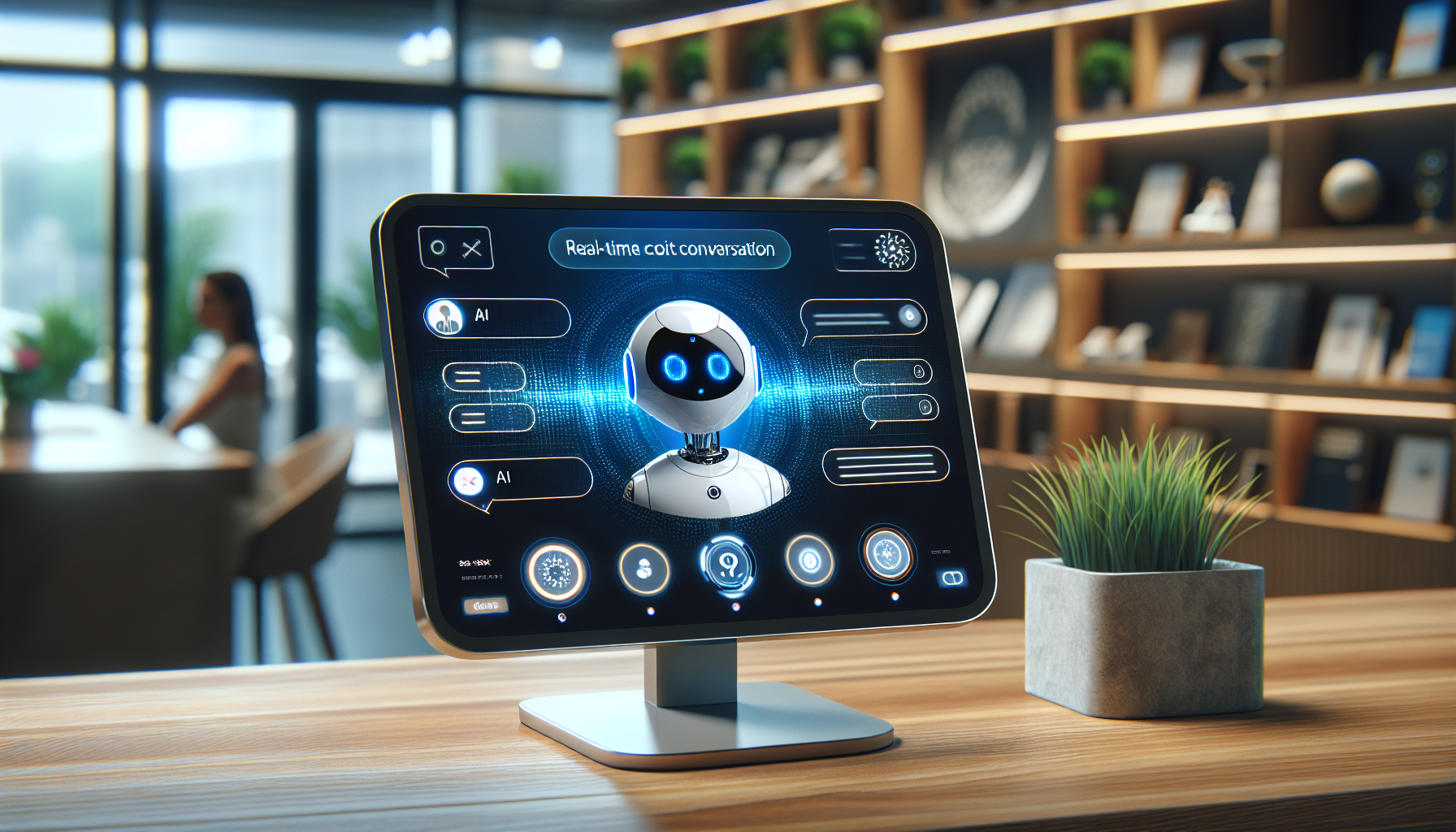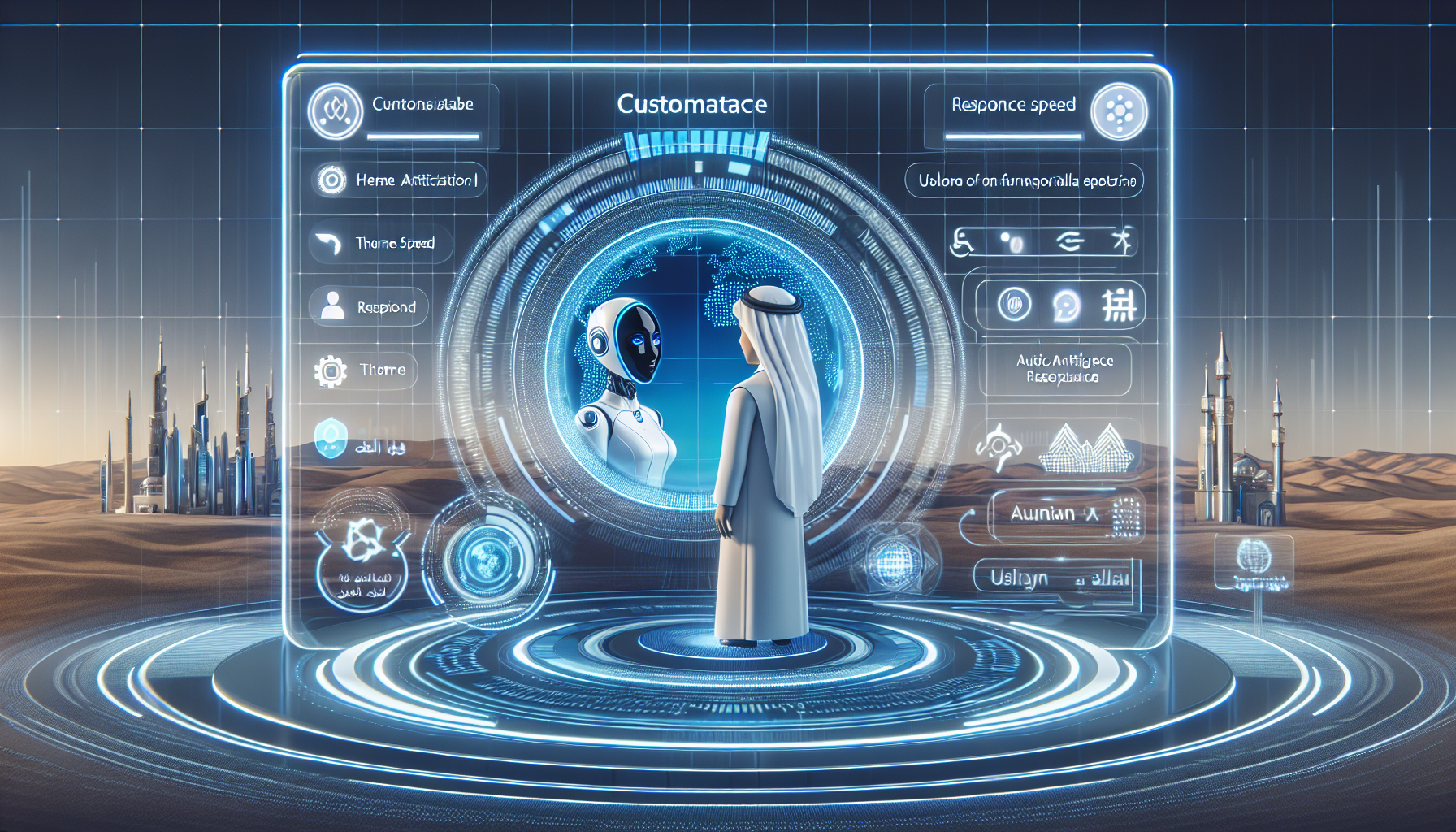
In today's digital age, the first point of contact for many customers with a business is often an artificial intelligence (AI) tool, such as an AI receptionist. Successfully boosting customer interaction, these AI-powered receptionists not only simplify tasks but also provide immediate, personalized responses. Yet, the value of an AI receptionist goes beyond its functionalities. A huge aspect of its success lies in its ability to reflect your brand's voice.

Your brand's voice essentially represents the personality of your brand. As such, an AI receptionist, presenting your brand's character accurately, can significantly enhance customer interactions. It can help to make those valuable customer engagements feel more personalized and aligned with your brand's image.
Research has shown that the tone and way in which an AI communicates can impact customer perception. If an AI receptionist interacts in a manner that doesn't match with your brand's personality, it may lead to confusion, causing a disconnect between customer expectations and reality. Hence, customizing your AI receptionist is crucial for forging trust and maintaining consistency across all customer touchpoints.
Fortunately, AI receptionist tools have evolved beyond standard responses. With modern techno capabilities, it's now possible to tailor your AI receptionist’s responses to match your brand's voice. Tone, communication style, and language - these aspects can be customized for a customer interaction that resonates with your brand’s image.
This level of customization gives businesses an opportunity to infuse their brand voice into each customer interaction. It creates a seamless experience, making the customer feel as if they're engaging directly with the brand, rather than with an AI tool.
In the following sections, we'll delve into how precisely you can tailor your AI receptionist's responses and the steps you can take to ensure it aligns perfectly with your brand's voice. So, let's get started on the journey to create an AI receptionist that is not only high-functioning but also a true extension of your brand.
A personalized brand voice is essential to connect with audiences and build your corporate identity. When customizing your AI receptionist, this brand voice should not be overlooked. For your AI receptionist to reflect this unique voice accurately, it's imperative to first identify and define the key characteristics of your brand's voice. So, how can this be achieved?
The first step in Defining Your Brand Voice is to figure out your brand's personality. Are you a conservative, professional institution or more of a casual, fun-loving startup? This will significantly influence how your AI receptionist should communicate. Does your brand have a lighthearted voice that mixes humor within its interactions? Or perhaps a more distinguished and refined tone is more suitable. Check out this link for tips in Identifying your Brand Personality.
Once you have identified your brand's personality, it's time to pinpoint the specific verbiage and tone to match. This requires a thorough understanding of your target audience and their preferences. Remember, the essence here isn't to just present information, but to do it in a manner consistent with your brand's personality. See Brand Verbiage and Tone for a detailed guide.
A voice chart is a valuable tool when customizing your AI receptionist. It's an organized set of guidelines regarding your brand voice, including language dos and don'ts, tone, and use of slang or jargon. In the voice chart, try to articulate the qualities that your brand voice should represent and hush those that it should avoid. For a more elaborate demonstration of this, here is a comprehensive Guide on creating Voice charts.
By defining your brand voice and translating it to your AI receptionist, you are not only making your brand more accessible and consistent but also integrating a crucial part of your business persona for more authentic and personalized customer interactions.
In the rapidly evolving digital landscape, having an AI Receptionist doing much more than just acknowledging a customer's presence; it can be the initial point of building a relationship with your customers. An AI receptionist that aligns with your brand voice projects consistency and creates a memorable, engaging experience for the customer. IBM Watson is one such AI that offers businesses the flexibility of customizing the AI's speech patterns, tone, and responses.

It is essential that you take time to customize the voice and tone of your AI receptionist to align it to your brand's identity. Tone refers to the warmth, friendliness, seriousness, or professionalism of your brand voice, whereas voice is more about the brand's character and values. For instance, a business consultancy would likely prefer a more professional and formal tone, while a toy store could opt for a playful tone.
Most AI platforms enable businesses to customize to their brand's requirements. For programs like the Google's Dialogflow, it's as simple as adjusting settings like speech speed, pitch, and volume gain. Furthermore, you have an extensive selection of voice types ranging from neutral and friendly to empathetic, you can choose the one that resonates with your brand's identity.
Equally critical to customizing your AI's responses. Responses must be designed in a manner that reflects your brand's tone and voice enhancing customer interaction. A Microsoft Azure Bot for instance, can be trained to respond to users with the brand's preferred language, slangs, and phrases, offering a wholesome experience.
Customizing your AI receptionist is integral to providing an authentic, personalized customer experience and maintaining your brand's image. Take advantage of AI platforms like IBM Watson, Google's Dialogflow, and Microsoft Azure Bot to tailor your AI receptionist's voice, tone, and responses to your brand's needs.
Equipping your business with an AI receptionist is not just about automating customer interactions. It also dovetails with the broader aim of personalizing user experience. A scenario where your AI receptionist can intelligently access and utilize relevant customer data from your business tools, such as Customer Relationship Management (CRM) systems and databases, can take customer service functionality to an entirely new level. When integrated effectively, your AI receptionist can provide consistent and well-informed responses that reflect your brand voice.
Your AI receptionist should function as an extension of your brand personality. The first step involves customizing the AI’s response style to match your brand voice. A CXL study has shown that 65% of consumers feel a connection to a brand because of shared values. Speaking in your brand's voice can serve to enhance this connection and establish loyalty.
Specific CRM tools like Salesforce or Hubspot can go a long way in helping your AI receptionist access crucial customer information. Such information can then be used to tailor responses based on their past interactions, preferences, and queries. Forbes cites AI as a revolutionizing factor in customer service, attributing this in part to its ability to harness big data.
Synchronizing your AI receptionist with your business database allows it to provide accurate answers and take note of frequently asked questions. This can be leveraged to improve its responses and also update your FAQs. These interactions become more meaningful, customer-centric, and supportive of your overall brand image.
In conclusion, a smart integration of your AI receptionist with your business tools can transform it from a static, query-taking machine to a dynamic, interactive platform. It's all about embedding your AI receptionist within your business strategy, giving it access to relevant information, and tailoring its responses in line with your brand voice. This will give your customers a seamless, personalized, and enjoyable interaction, boosting their satisfaction and trust in your brand.
Advanced customization capabilities are at the core of a successful AI receptionist experience. Tailoring responses to your brand voice allows for cohesive storytelling consistent with your brand ethos and values. This communicates authenticity and reliability to your audience. From handling customer scenarios to managing multilingual needs and implementing industry-specific terminologies, customization plays an undeniably significant role.

One of the key factors of advanced AI customization is the handling of different customer scenarios. An AI receptionist capable of catering to a diverse range of customer needs and demands has higher customer satisfaction rates. For example, AlphaChat's AI training offers detailed insights on how to fine-tune your AI receptionist to anticipate a variety of customer inquiries, efficiently providing the right response at the right time.
Managing multilingual needs is another essential aspect of customization. Companies operating internationally should ensure their AI receptionist is competent in handling inquiries in multiple languages. Platforms like IBM Watson Assistant come with a pre-trained machine learning model designed to understand the nuances of thirteen different languages, ensuring the AI receptionist can communicate with customers globally.
The third critical component is the application of industry-specific terminologies. Depending upon the industry your business operates in, various technical terms and phrases might be used frequently. It is crucial for an AI receptionist to understand and effectively use these terms to ensure clear and accurate communication. Tools like Dialogflow by Google provide features for systems to learn and understand terminologies pertaining to particular industries, ensuring your AI receptionist communicates effectively and proficiently with your customers.
In conclusion, advanced customization options in an AI receptionist are crucial for a tailored, effective, and brand-consistent customer experience. Embrace AI capability to enhance your brand voice, build trust with your customers, and ensure your customer service stands out in the marketplace.
Once your AI receptionist is set up and running, the work does not end there. Its functionalities need regular supervision and adjustments to align with your brand voice consistently. This process requires an active approach to monitor and evaluate the AI's performance, followed by implementing feedback mechanisms to refine its interactions.
Monitoring of your AI receptionist can be executed via a range of analytics reports or dashboards inbuilt into most AI platforms like Watson Assistant. These tools can help track concerning aspects, like: most common queries, resolution rate, customer satisfaction score, etc. Additionally, it’s useful to involve human supervisors in the process. They can listen into live calls or read transcripts to identify if and where the conversation is falling short.
In addition or as an alternative to monitoring software, user surveys can feasibly track AI effectiveness. Tools like SurveyMonkey allow for quick and easy survey creations that can be sent to your customers post interaction with the AI. Meticulously designed short inquiries can provide valuable insights about its user friendliness, precision, speed, etc.
A crucial aspect of refining and improving your AI receptionist involves actively adjusting its responses based on the data collected. An open feedback loop is necessary where the constructive criticism received from various sources like employees, customers, and software analytics can be effectively utilized. Elements like tonality, language style, response speed, and problem-solving ability of the AI can be amended as needed.
Another aspect to cater here includes feeding new data to the AI to train it for prospective interactions. This can be new product details, company policies, frequent customer issue resolutions or even altering responses to mimic the brand voice more effectively. Vendors like Google Contact Center AI support continuous AI training to improve conversation quality over time.
To sum up, the journey of customizing your AI receptionist is not a one-off project but a continuous process. A proactive strategy for monitoring, feedback and adjustments can immensely help in optimizing your AI to reflect your brand voice accurately and deliver superior customer experiences.
Start your free trial for My AI Front Desk today, it takes minutes to setup!








